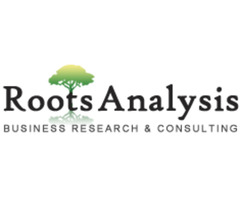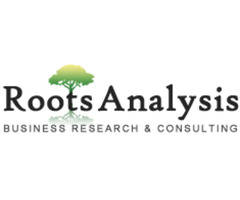Stella Wilson's profile
Register date: March 25, 2021
14158003415
14158003415
User Description
Outsourcing
has become a popular trend among biopharmaceutical developers, allowing them to
leverage the expertise / larger production capacities of CMOs / CDMOs and
achieve significant cost and time related advantages
Roots
Analysis is pleased to announce the publication of its recent study, titled, “Biopharma
Contract Manufacturing Market,
2021-2030.”
The
report features an extensive study on the contract service providers within the
biopharmaceutical industry. The study features in-depth analysis, highlighting
the capabilities of a diverse set of biopharmaceutical CMOs and CDMOs. Amongst
other elements, the report includes:
·
A detailed review of the overall landscape of
the biopharmaceutical contract manufacturing market, featuring a comprehensive
list of active CMOs and detailed analysis of the manufacturing service
providers based on a number of parameters.
·
Elaborate profiles of key players that have a
diverse range of capabilities for the development, manufacturing, and packaging
of biologics.
·
A detailed discussion on the key enablers in
this domain, including certain niche product classes, which are likely to have
a significant impact on the growth of the contract services market.
·
A case study on the growing global
biosimilars market, highlighting the opportunities for biopharmaceutical CMOs
and CDMOs.
·
A case study comparing the key
characteristics of large molecule and small molecule drugs, along with details
on the various steps involved in their respective manufacturing processes.
·
A discussion on challenges related to
in-house manufacturing, featuring a brief overview of the various parameters
that a drug / therapy developer may need to take into consideration while
deciding whether to manufacture its products in-house or outsource.
·
An analysis of the recent collaborations
(signed since 2013) focused on the contract manufacturing of biologics.
·
A detailed analysis of the various mergers
and acquisitions that have taken place in this domain, highlighting the trend
in the number of companies acquired between 2013-2018, along with the
geographical distribution of this activity.
·
An in-depth analysis of more than 490 grants
that have been awarded to research institutes engaged in next generation immune
checkpoint therapy-related projects.
·
An analysis on the recent trends within
biopharmaceutical contract manufacturing industry, highlighting various
facility and capability expansions.
·
A detailed capacity analysis, taking into
consideration the individual development and manufacturing capacities of
various stakeholders.
·
A detailed capacity analysis, taking into
consideration the individual development and manufacturing capacities of
various stakeholders.
·
A discussion on affiliated trends, key
drivers, and challenges, under a comprehensive SWOT framework.
·
A survey analysis featuring inputs solicited
from various experts who are directly / indirectly involved in providing CMO
services to medical device developers.
Request for Customization: https://www.rootsanalysis.com/reports/250/request-customization.html
Roots
Analysis is pleased to announce the publication of its recent study, titled, “Antibody Contract Manufacturing Market, 2020-2030” report to its list of
offerings.
The
report features an extensive study of the current market landscape and future
opportunities associated with the contract manufacturing of antibodies. The
study also features a detailed analysis of key drivers and trends related to
this evolving domain. In addition to other elements, the study includes:
·
A detailed review of the overall landscape of
companies, offering contract services for the manufacturing of antibodies.
·
A competitiveness analysis of key players
engaged in this domain, featuring an assessment based on their supplier
strength and service strength.
·
A benchmark analysis, highlighting the key
focus areas of small, mid-sized and large companies, comparing their existing
capabilities within and beyond their respective (geography-based) peer groups.
·
An analysis of the various partnerships
pertaining to contract manufacturing of antibodies, which have been established
since 2013.
·
An analysis of the various expansion
initiatives undertaken by service providers, in order to augment their
respective antibody manufacturing capabilities, over the period 2017-2019 (till
October).
·
An estimate of the overall, installed
capacity for manufacturing antibodies based on data reported by industry
stakeholders in the public domain.
·
Informed estimates of the annual commercial
and clinical demand for antibodies, based on various relevant parameters, such
as target patient population, dosing frequency and dose strength.
·
Elaborate profiles of the key industry
players that offer contract manufacturing services at all scales of operation
and have more than two manufacturing facilities.
·
A case study comparing the key
characteristics of large molecule and small molecule drugs, along with details
on the various steps and challenges involved in their respective manufacturing
processes.
·
A discussion on affiliated trends, key
drivers and challenges, under a SWOT framework, which are likely to impact the
industry’s evolution.
Request
for Latest Market Insights:
https://www.rootsanalysis.com/reports/view_document/antibody-cmo-market/295.html
The
concept of targeted protein degradation presents revolutionary drug development
opportunities and is anticipated to bring about a paradigm shift in modern
healthcare. The first targeted protein degrader, called proteolysis targeting
chimera (PROTAC), was developed about a decade ago.
Presently, a variety of
other such chemical entities and molecular glues are under investigation. In
fact, certain pipeline candidates are already in the mid to late-phase trials
and are anticipated to soon enter the market.
The
USD 3.6 billion (by 2030) financial opportunity within the Target Protein Degradation Market has been analyzed across the following
segments:
Type
of payment of licensing agreements
·
Upfront payments
·
Milestone payments
Type
of protein degrader
·
Degronimids
·
PROTACs
·
SARDs / SERDs
·
Specific BET and DUB inhibitors
·
Other protein degraders
Therapeutic
area
·
Neurodegenerative disorders
·
Oncological disorders
·
Other therapeutic areas
Route
of administration
·
Oral
·
Intravenous
·
Other routes
Key
geographical region
·
North America
·
Europe
·
Asia-Pacific
The
Targeted Protein Degradation Market: Focus on Therapeutics and Technology
Platforms (based on Degronimids, ENDTACs, Epichaperome Inhibitors, Hydrophobic
Tags, IMiDs, LYTACs, Molecular Glues, PHOTACs, PROTACs, Protein Homeostatic
Modulators, SARDs, SERDs, SNIPERs, and Specific BET and DUB Inhibitors),
2020-2030 report features the following companies, which we identified to be
key players in this domain:
Get
detailed Analysis:
https://www.rootsanalysis.com/reports/view_document/protein-degradation-market/289.html
Several
approved therapeutic products, which are currently available as intravenous
dosage forms, are being reformulated and evaluated for subcutaneous administration.
Further, many existing drug delivery devices, including prefilled syringes, pen
injectors, auto injectors, needle-free injectors and large volume wearable
injectors, have been / are being designed for subcutaneous administration of
biologics.
The USD 180+ billion (by
2030) financial opportunity associated with subcutaneous biologics, affiliated
drug delivery systems and subcutaneous formulation technology licensing deals,
has been analyzed across the following segments:
Subcutaneous Biologic Drugs and
Affiliated Technologies Market, Trends by 2030
Market
Segment:
Phase
of development
·
Approved
·
Pre-registration & Phase III
·
Phase II & Phase II/III
Type
of molecule
·
Cell and gene therapies
·
Monoclonal antibodies
·
Proteins
·
Peptides (recombinant)
·
Vaccines
·
Others
Target
therapeutic area
·
Autoimmune disorders
·
Blood disorders
·
Bone disorders
·
Genetic disorders
·
Metabolic disorders
·
Neurological disorders
·
Oncological disorders
·
Respiratory disorders
·
Others
Type
of drug delivery system
·
Large volume wearable injectors
·
Autoinjectors
·
Prefilled syringes
·
Needle-free injectors
·
Drug reconstitution systems
·
Revenues from licensing deals
·
Upfront payments
·
Milestone payments
Key
geographical regions
·
North America
·
Europe
·
Asia Pacific
·
Rest of the World
Request for PDF Sample: https://www.rootsanalysis.com/reports/314/request-sample.html
Owing
to the ever-increasing number of medical devices along with the rising
associated complexities and stringent guidelines issued by various regulatory
authorities, the global medical device labeling market is likely to grow at
stable rate. Furthermore, it is also necessary for the organizations to adopt
labeling practices which can help them to reduce reaction time in order to
process change requirements.
Therefore, in order to
overcome the aforementioned challenges, medical devices companies are
outsourcing their packaging and labeling operations to core label
manufacturers.
The USD 509 Million (by
2030) financial opportunity within the Medical Device Label Contract
Manufacturing Market has been analyzed across the following
segments:
Key
Segments:
Type
of labels
·
Glue applied labels
·
Pressure sensitive labels
·
In mould labels
·
Shrink sleeve labels
·
Other labels
Type
of material
·
Plastic labels
·
Paper labels
·
Other material labels
Application
type
·
Monitoring and diagnostic equipment labels
·
Disposable consumables labels
·
Therapeutic equipment labels
Device
class
·
Class I medical devices
·
Class II medical devices
·
Class III medical devices
Key
geographical regions
·
North America
·
Europe
·
Asia Pacific
The Medical
Device Labels Technology Market, 2021-2030 report features the following
companies, which we identified to be key players in this domain:
Read Detailed Analysis: https://www.rootsanalysis.com/reports/view_document/medical-device-labels-manufacturing-market-2019-2030/272.html
Roots
Analysis has announced the addition of “Diabetes Monitoring Devices Market, 2020-2030” report to its list of
offerings.







